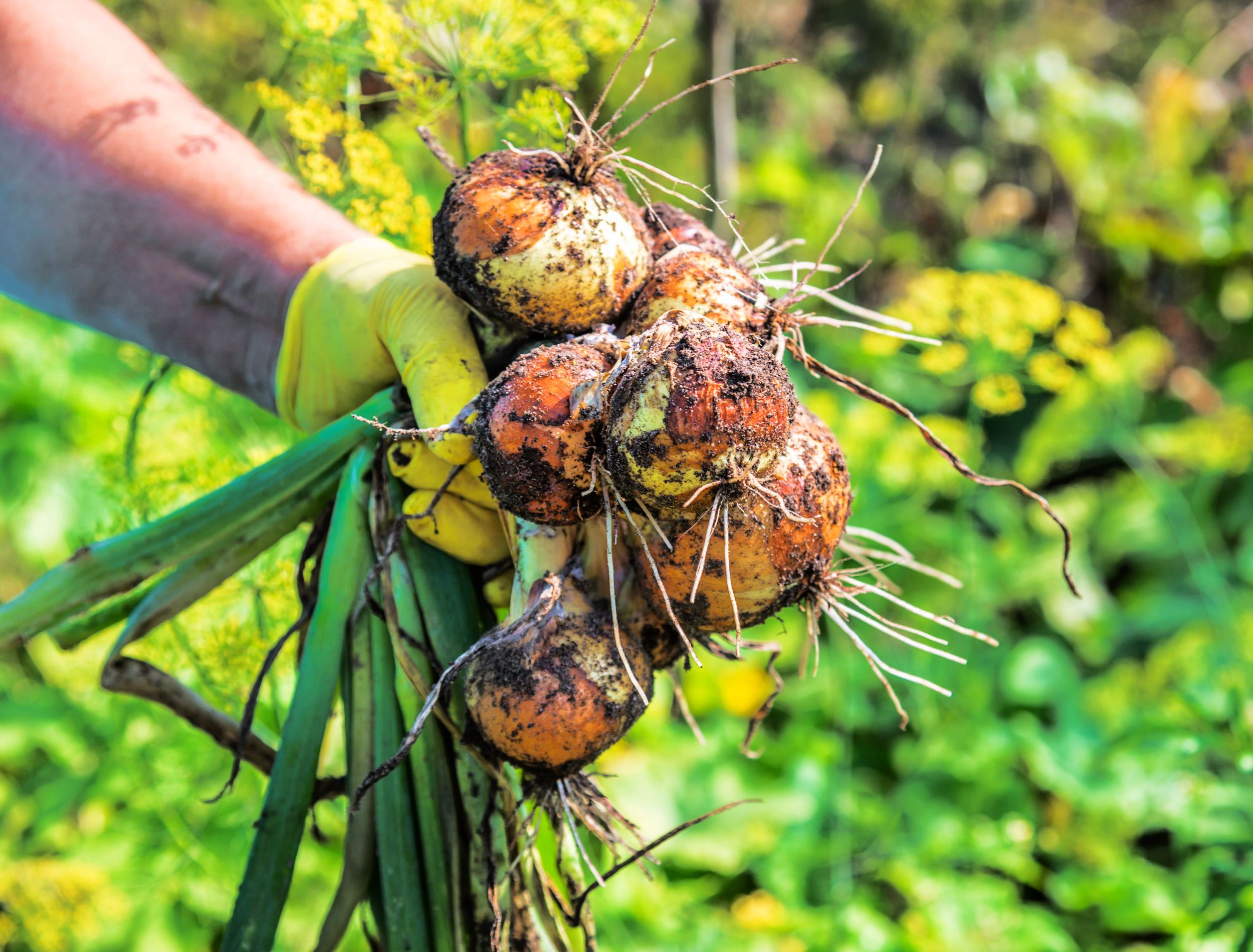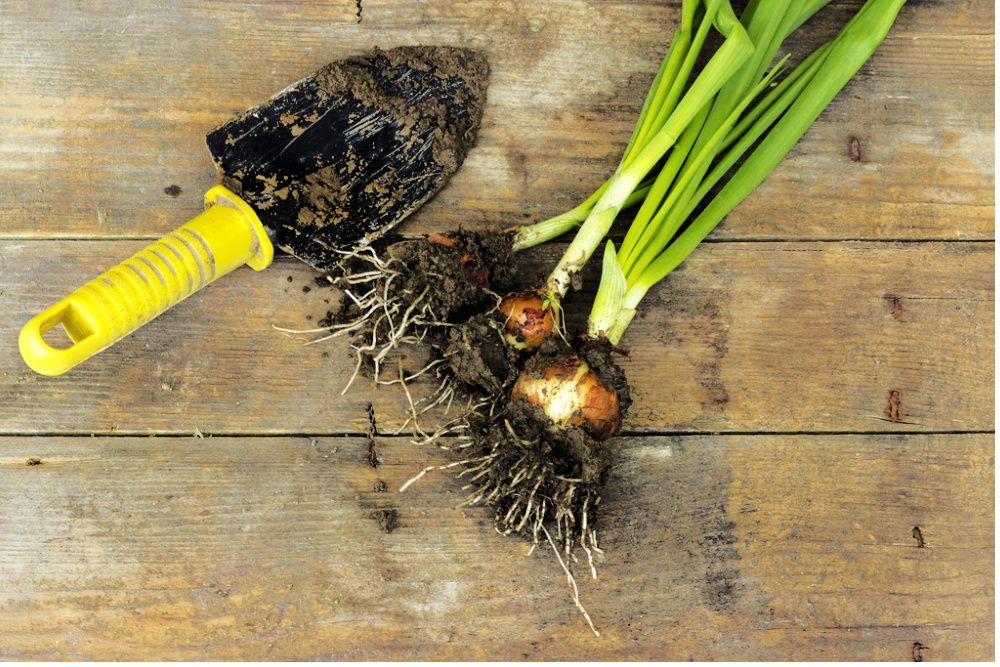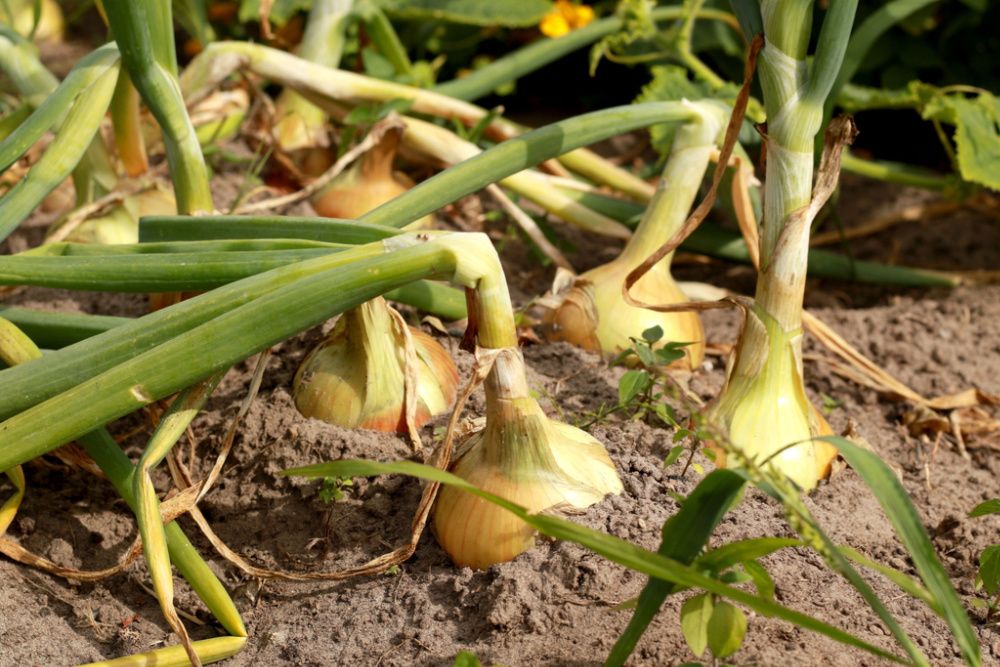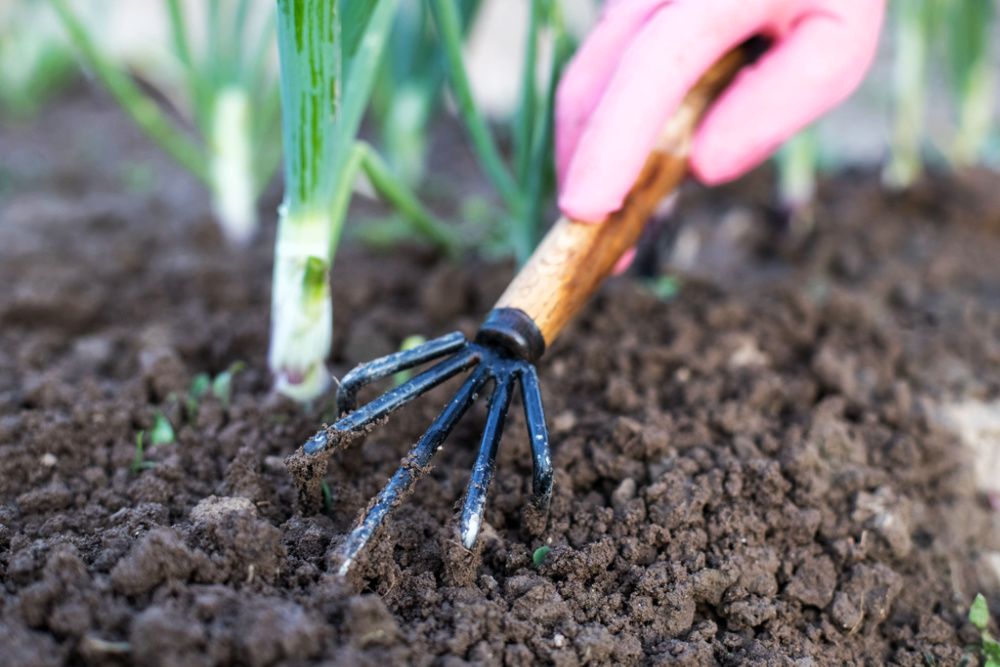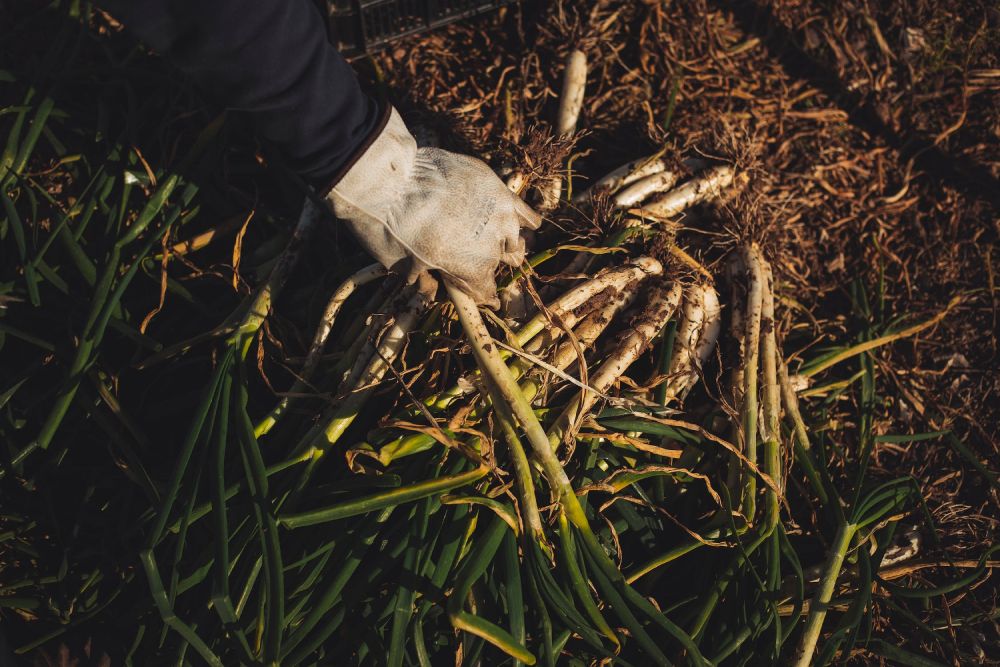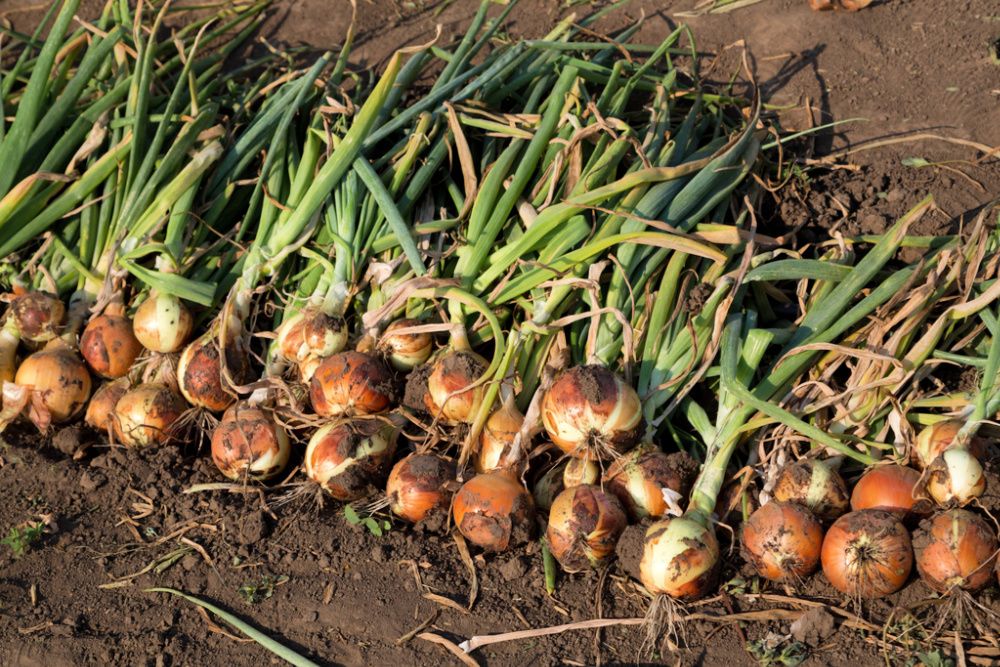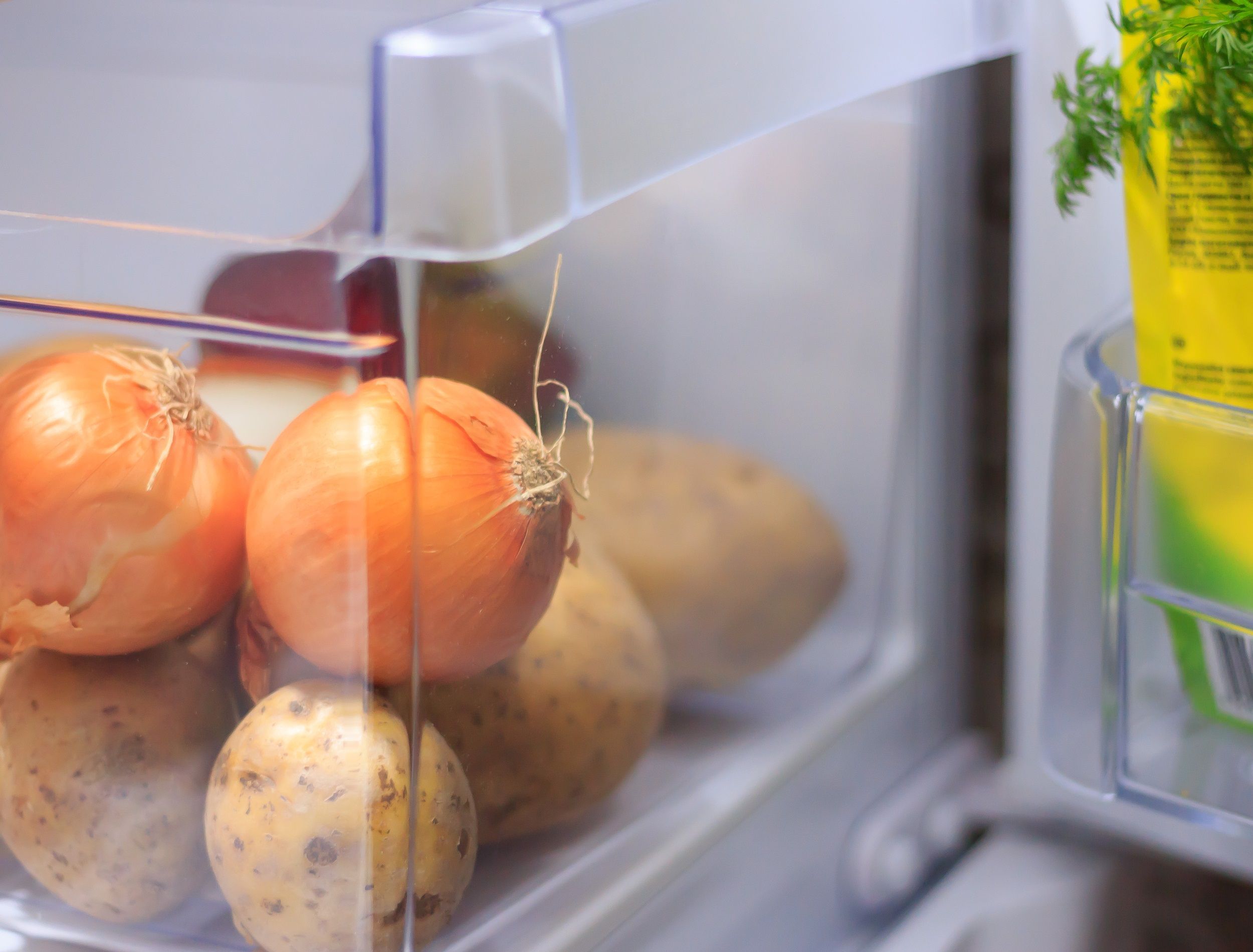Onions are a staple worldwide in many cuisines, home gardens, and kitchens. You can use them in various dishes, from soups and stews to salads and stir-fries. Given their popularity, it's no surprise that onions are relatively easy to grow at home.
Onions (Allium cepa) are a root vegetable native to central Asia. They prefer moist, well-drained soils that are high in organic matter. They also need full sun to grow properly. If you're thinking about planting an onion crop, here's what you need to know about how and when to harvest your bounty.
Materials Needed
Image credits: Dimijana via Shutterstock
Harvesting onions requires few materials, and you likely already have them on hand. Here's what you'll need:
- Spade or shovel
- Colander or basket
When to Harvest Onions
Image credits: Jurjanephoto via Shutterstock
The exact timing of your onion harvest will depend on a few factors. First, the variety of onions you're growing; second, whether you want to eat them as scallions or mature; and finally, the weather conditions in your area.
That said, if you plant your onions in the spring, they should be ready for harvest by mid-summer. That is typically when the bulbs are fully mature and have had a chance to develop their full flavor. However, you can also harvest them earlier in the season if you'd like to spring onions or scallions.
Mature onions are ready for harvest when at least half of their tops start to dry and fall onto the soil. Pull one up from the ground to confirm that your onions are ready for harvest.
Step-by-Step Guide to Harvesting
Once you've determined that your onions are ready for harvest, here's what you need to know about how to do it.
Step One: Loosen the Soil
Image credits: Elena Masiutkina via Shutterstock
Start by loosening the soil around the onion plants with a spade or shovel. You want to be careful not to damage the bulbs as you do this.
Step Two: Lift the Onions Out the Ground
Image Credit: Ricardo Ortiz via Pexels
Gently lift the onions out of the ground and be careful not to break them.
Step Three: Let Them Dry Out
Image credits: Martien van Gaalen via Shutterstock
Once you've pulled your onions out of the ground, leave them in the garden for a few days to let the wind and sun dry them. This is called curing. If your soil is wet, you can dry them inside instead.
Step Four: Remove Dirt
Image credits: tilzit via Canva
Brush off excess dirt and place the onions in a bucket or container.
How to Store Onions
Image credits: Ksenia_MA via Shutterstock
How you store onions is essential to keeping them fresh and preserving their flavor. You can store onions for several weeks or even months under the right conditions. Check on them often to see if they are still fresh and free of mold or other signs of spoilage.
There are many ways to keep them fresh. Below are the most common methods:
Storing In A Dark Place
It is best to store onions in a cool, dark place with good ventilation. An ideal storage spot would be a cellar or basement. This method can keep onions good for up to eight months.
Refrigerating
If you don't have access to a cool, dark storage area, you can store onions in the refrigerator. Keep them in a towel or bag to ensure moisture stays out so they don’t rot.
Freezing
To freeze onions, first, slice or chop them into small pieces. Then spread the chopped onions on a baking sheet and place them in the freezer. Once frozen, transfer the onions to a freezer-safe bag or container.
Dehydrating
To dehydrate onions, slice them thinly and spread them out on a dehydrator tray. Next, place them inside the dehydrator for nine hours until they're brittle. Once they're dried, store them in an airtight container in a cool, dark place.
No matter how you store them, onions can be a great addition to your home garden. With a little effort, you can enjoy fresh onions all year long!
In Conclusion
Now that you know when and how to harvest onions, you can add this delicious vegetable to your home garden. With some planning and basic gardening supplies, you will always have this tasty veggie at hand!
Once you have harvested onions, store them in a cool, dark place for up to eight months. For longer-term storage, you can also freeze or dehydrate them. With a little effort, you can enjoy delicious onions all year long!
Thanks for reading, and don't forget to share this article with anyone who might be interested in learning how to harvest onions. Happy harvesting!

